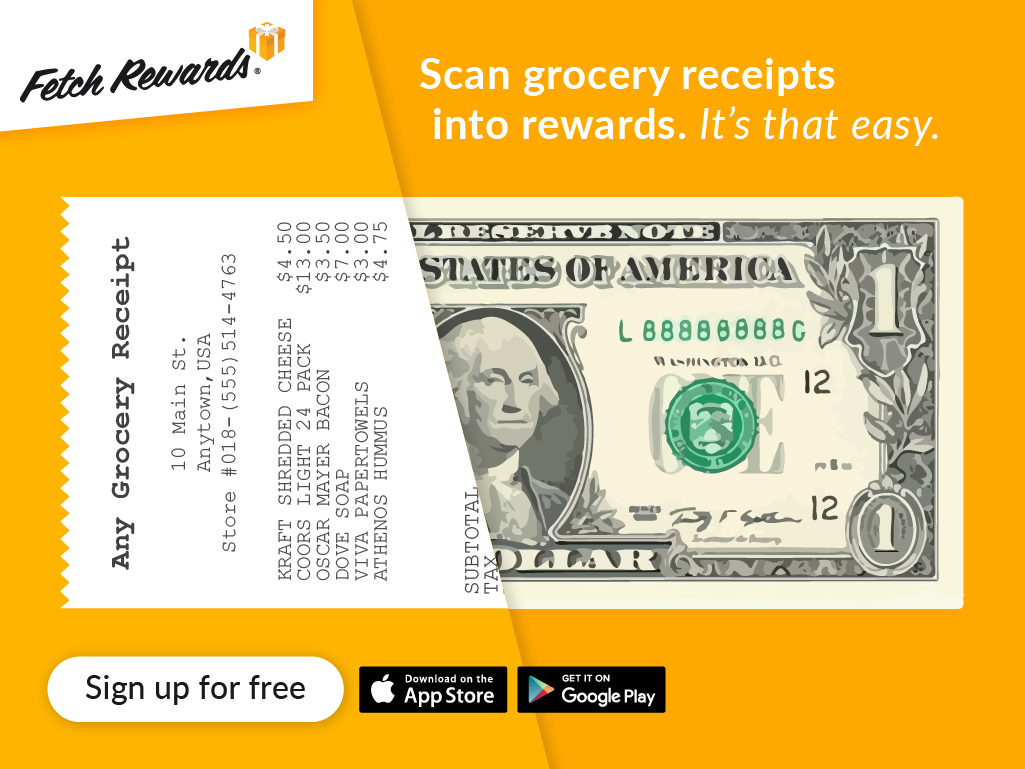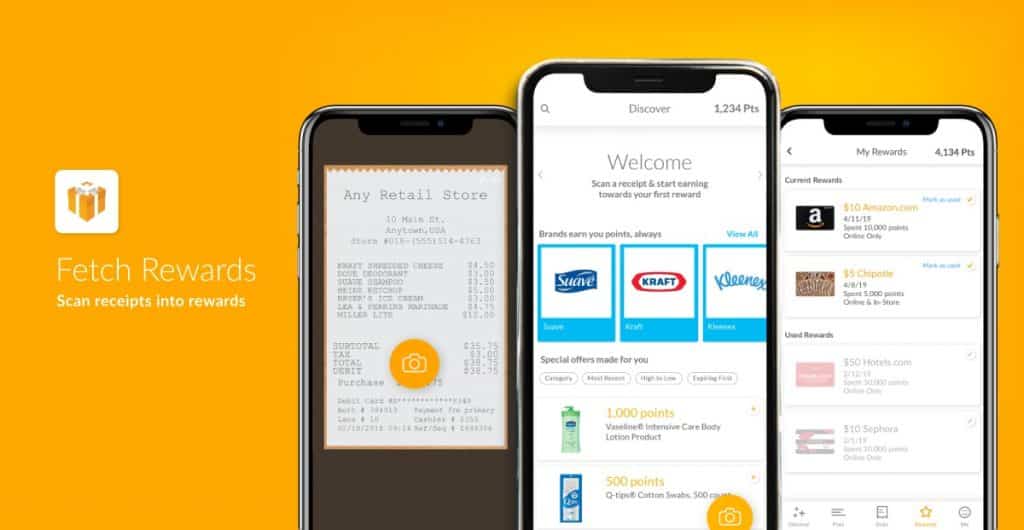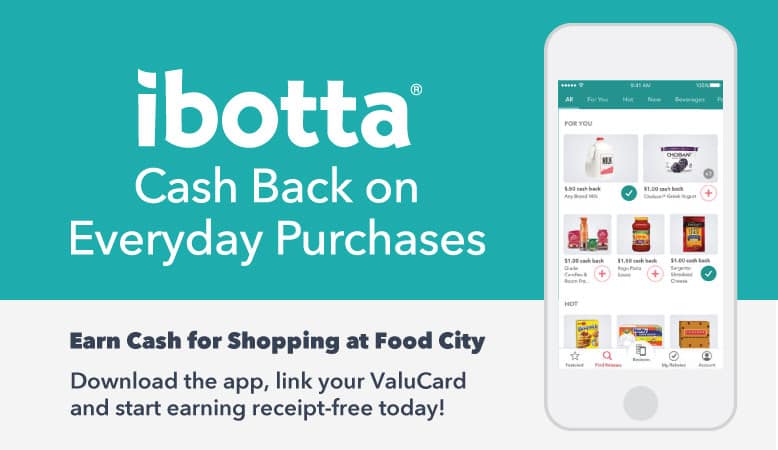Business & finance
Fetch Rewards App Review – Save Money on Groceries
If the idea of earning gift cards, saving money, and getting more out of your grocery shopping experience appeals to you, then you may want to give Fetch Rewards a try.
A newer addition to the pantheon of grocery store rebate apps, Fetch Rewards offers a simple cashback scheme. The idea of an app like Fetch may sound exciting, but if you are currently using Ibotta, should you make the switch? Fortunately, you don’t have to choose between the two.
Users can combine both Fetch and Ibotta to obtain even more savings and rewards. If you are looking for a well-rounded review of Fetch Rewards, keep reading to learn more about the cashback app’s pros, cons, and how to make the most of it.
What is Fetch Rewards?
Fetch Rewards is a grocery cashback app that allows users to earn rewards simply by taking photographs of their receipts. The company itself is based in Madison, Wisconsin, but it has locations in San Francisco, New York, and Chicago. To date, more than $40 million in Fetch Points have been rewarded and more than 2.5 million people use the app on a monthly basis.
Ibotta and Fetch Rewards share many of the same similarities, but Fetch offers some unique benefits. Fetch Rewards is renowned for its simplicity and many people appreciate the fact that it is easier to use than Ibotta.
You can also use the app in virtually any grocery store, club store, drugstore, or convenience store, unlike Ibotta, which requires its users to only shop at certain stores. To use Fetch Rewards, all you have to do is scan your receipt to win points.
How is Fetch Rewards Different?
Fetch rewards can offer users numerous advantages over other grocery cashback apps. Some of these advantages include:
- There is no need to activate deals beforehand or scan barcodes.
- There are no annoying video ads to watch or surveys to complete.
- You can plan your shopping trips based on products that will earn you the most points.
- You can search for ingredients and recipes that will add points to your built-in shopping list.
Simply put, Fetch Rewards is different because it is so easy to use compared to other grocery cashback apps. The vast majority of Fetch Rewards reviews applaud the program’s user-friendly interface and no-fuss cashback process.
How Fetch Rewards Works
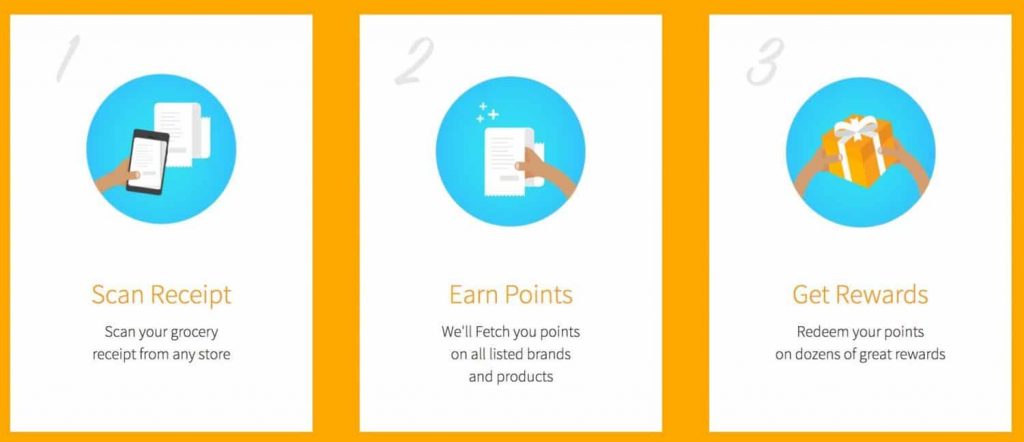
In exchange for buying products or fulfilling offers, Fetch Rewards offers grocery shoppers points as rewards. The number of points you accumulate is based on how many required products, or offers, are in your receipt. You can also earn cashback for multiple receipts.
All of this sounds easy, but what does Fetch Rewards get in return? Fetch Rewards helps businesses perform market research using your data and receipts. This allows them to improve their services and products. Your data and information are kept safe and anonymous, so there is no need to worry about it falling into the wrong hands.
Browsing Offers
After registering, you can browse a variety of offers you may want to fulfill on the home screen. To see how many times an offer can be claimed, just click it. Be sure to read each offer description fully – you may have to meet certain requirements before you can fulfill an offer.
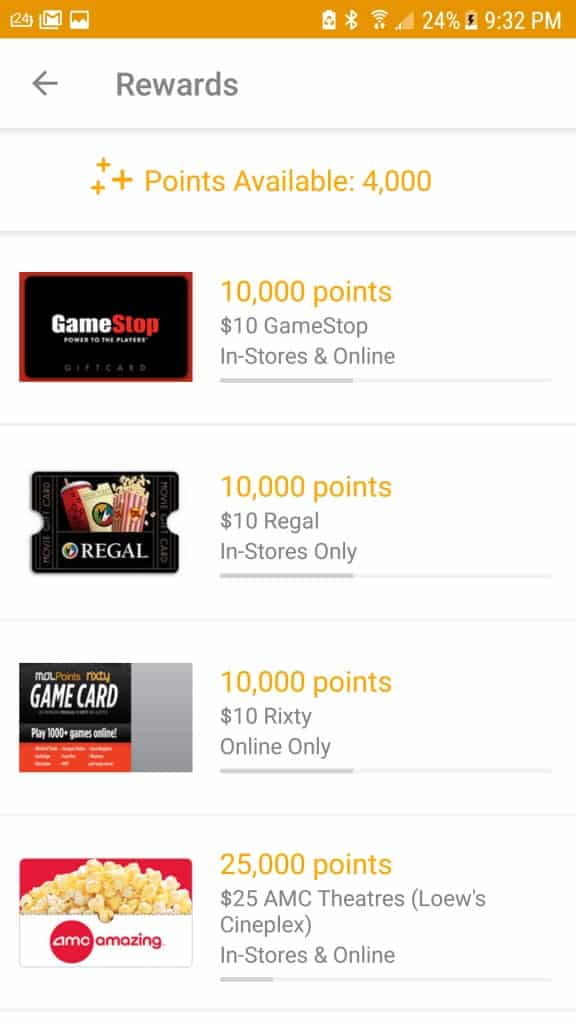
Taking Photos of Your Grocery Receipts
You will need to make sure that the store name, date of purchase, store address, items purchased, and total amount are visible on your receipt before taking a picture. There is no need to remember all of this as long as you make sure you’re taking a photo of the entire receipt from top to bottom.
Place the receipt on a dark background and flat surface, and be sure to focus, so the picture doesn’t come out blurry or skewed. If you have a long receipt, you can take more than one photograph per section. It is important to remember. However, you are only allowed up to four photographs per receipt.
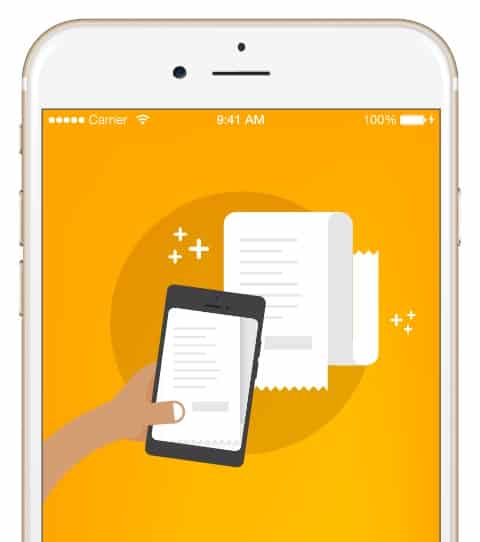
Cashing Out
In order to cash out, you will need a minimum of $3 or 3,000 points before you can convert your points into rewards. The threshold isn’t difficult to meet, considering you can earn anywhere from 250 to 3,000 points for each offer, and Fetch Rewards users often rave about the minimum cashout requirement.
You also have the option to exchange your points for gift cards or to donate them to the Red Cross. Once you claim a reward, you will receive an email with instructions on how to go about claiming them.

Earn more by Referring Friends
It is possible to refer your friends to earn even more points. For each friend you refer, both you and your friend will receive a reward of $1.50.
Upon signing up, your friend will need to enter a promo code located under the “Me” tab so you can both earn your reward. Reference points are only available after your friends scan their first receipt.
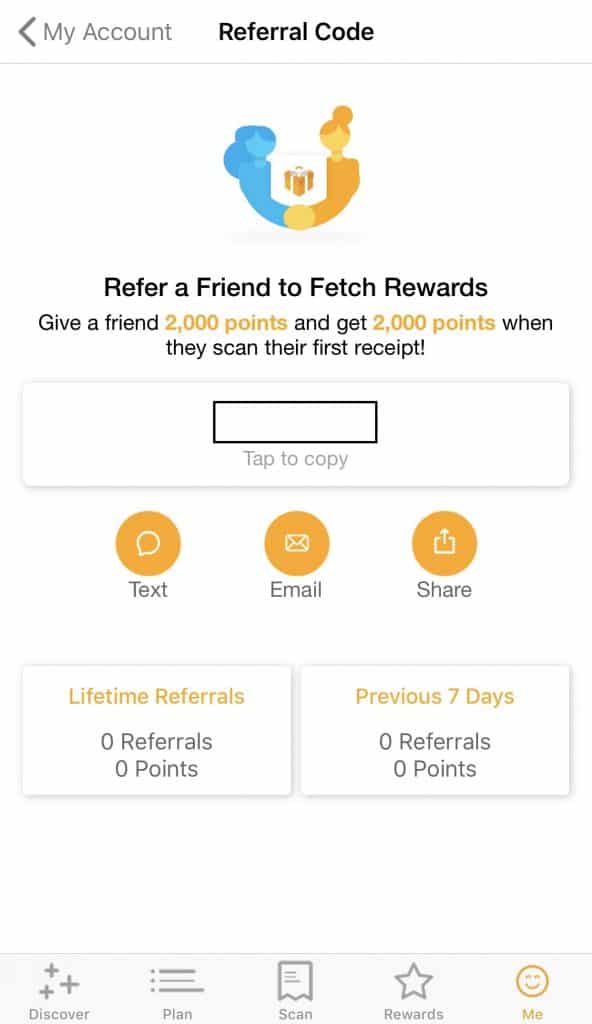
How Much Can I Earn From Fetch Rewards?
1,000 points will give you $1, and shoppers may earn anywhere from 250 to 3,000 points for every offer. Unlike many other apps, which reward their users with actual cash, Fetch Rewards only offers gift cards in exchange for points from retailers such as CVS, Amazon, and Target.
Once you have a minimum of $3, you may also donate your earnings to the Red Cross. The rules for earning points are as follows:
- Uploaded receipts may not be more than two weeks old (14 days).
- You may not convert expired receipts to points.
- You can only submit a maximum of 14 receipts every week (7 days).
- You can only use a receipt once.
- If your account is inactive for 90 days, any points you have accumulated will expire.
- Fetch Rewards processes most points within 48 hours. If you don’t receive your points within 72 hours, you may follow up with the Fetch the app support team at support@fetchrewards.com
How Can I Maximize My Earnings in Fetch Rewards?
There are five main ways to maximize your earnings:
1. Scan your grocery receipts (All of them)
Once you scan your grocery receipt, you will earn points from Fetch Rewards – it is that simple. The number of items you purchased doesn’t matter as long as you submit them (you can earn up to 25 points for buying a single item). Although this isn’t the best way to maximize your earnings from the app, it is the fastest and the easiest. Just remember to have your phone on hand when shopping at your neighborhood retailers.
2. Purchase from Participating Brands
You can also earn points by purchasing products from Fetch Rewards’ participating brands. You’ll notice a list of popular brands on your Fetch Rewards dashboard under the “Discover” icon. The cost of each item will determine how many points you can earn.
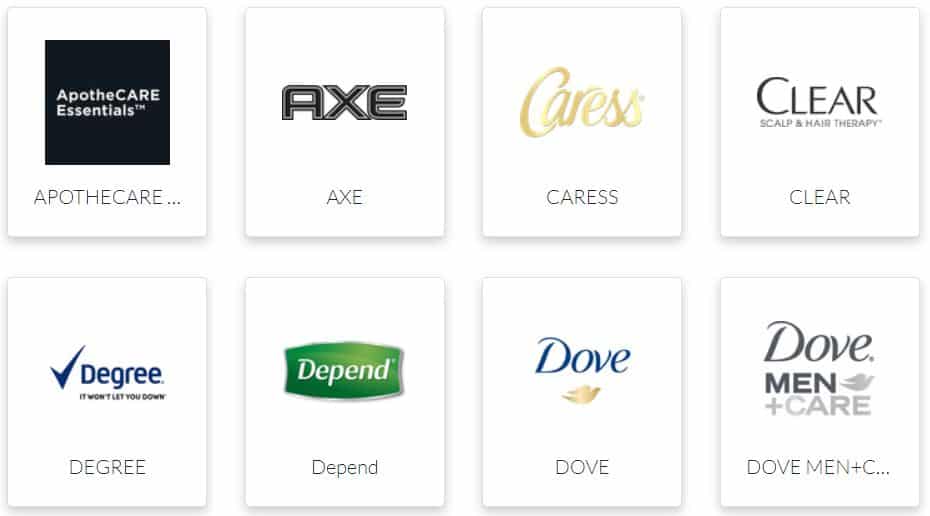
3. Purchase Special Offers
You can earn the most points by purchasing special offer products, but doing so can be challenging. To do this, you will need to purchase specific products. Look under the “Discover” tab to see “Special offers made for you”.
Here, you can see the products you can purchase and how many bonus points they are worth. Special offers are often worth between 250 and 3,000 points per offer. Each special offer will expire after a certain amount of days and be replaced with a new deal.
4. Referral bonus
As mentioned above, make sure you refer all your friends and family.
5. Combine Fetch Rewards with Ibotta
If you are ready to double your savings and rebates, you can use Fetch Rewards in conjunction with Ibotta, the most popular receipt scanning app in the world. Ibotta has partnerships with countless retailers and thousands of offers to choose from.
Ibotta also rewards users with real cash (you will need a minimum of $20 to cash out), so using the two apps can help you earn even more money for shopping. Once you complete your regular shopping, just scan your receipt using both apps to double your earnings.
What Stores Work with Fetch Rewards
Fetch Rewards can be used at a plethora of convenience stores, grocery stores, dollar stores, drugstores, club stores, big box stores, package stores, and even liquor stores.
Some of the most popular stores include Walmart, Target, CVS, Kroger, Sam’s Club, Publix, Meijer, Aldi, Costco, Food Lion, Rite Aid, Whole Foods, 7-Eleven, Winn-Dixie, Hy-Vee, Shell, Speedway, Dollar General, Safeway, and Walgreens.
How to Sign Up for Fetch Rewards
Signing up is a fairly simple process, and the app is available on both Android and iOS. All you need is an email address, or you can opt to use your Facebook account.
You must enter your state of residence and phone number on the sign-up page, and once you complete this step, you will receive a confirmation text with a code allowing you to confirm your registration.
Pros and Cons of Fetch Rewards
We scoured the internet for reviews on Fetch Rewards to find out what consumers love and hate about the app. Here’s what we found:
Pros
- It is free to sign up.
- There is no need to activate offers in order to claim them, as is common with other grocery cashback apps.
- Incredibly easy receipt scanning process, and user-friendly interface.
- You can earn gift cards for doing something you have to do in the first place – shop.
- It is easy to earn points. No matter how many items you purchase, you will receive 25 points for every eligible receipt.
Cons
- Fetch Rewards only rewards with gift cards, unlike other apps that reward with hard cash.
- The point to dollar ratio is somewhat low: 1 point = $0.001.
- Some users have reported technical issues, such as freezing when trying to scan receipts.
Tips for Using Fetch Rewards
- You must be 18 years or older to be eligible to use Fetch Rewards. The app is also only available in the United States at the moment.
- Reward points can be redeemed for Visa or MasterCard gift cards.
- You can still earn from Fetch Rewards using in-store coupons.
- If you haven’t received your points within 72 hours or you encounter any errors with the app, you may contact the company’s support team at support@shopfetch.com. There should be no problem with troubleshooting since Fetch Rewards has an active support team.
- Use the app in conjunction with another savings app to get the most out of it.
Is Fetch Rewards Legit?

With millions of subscribers and countless positive reviews, Fetch Rewards is a legitimate app. The platform serves to help you earn money for shopping. The company app currently has a rating of 4.7 on Appgrooves based on more than 500,000 votes, a leading app review site.
Here at WeKnow, We Know ( ?) that your time is important, and any time you spend using the app is valuable. With that said, you already have to shop. There is no reason you shouldn’t earn rewards while doing so. Learn more about Fetch Rewards here.
Fetch Rewards
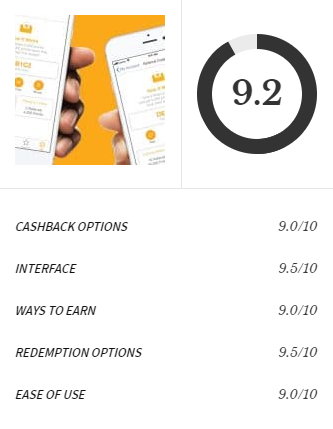
PROS
- User-Friendly Interface
- Completely Free
- Easy to Use
- Redemption Options
CONS
- Some Technical Issues
- Only Available in the U.S.
- No Signup Bonus
Business & finance
Uphold: The All-in-One Mobile App for Crypto and Multi-Asset Trading
Uphold: The All-in-One Mobile App for Crypto and Multi-Asset Trading
Uphold has carved out its place as a versatile platform that goes beyond cryptocurrency, enabling users to trade and manage various asset types, including fiat currencies, stocks, precious metals, and more. Designed for simplicity and accessibility, the Uphold app makes it easy to diversify and manage your portfolio anytime, anywhere. In this review, we’ll explore the app’s standout features, benefits, and potential drawbacks to help you decide if it aligns with your financial goals.
Key Features of Uphold
1️⃣ User-Friendly Mobile Interface The Uphold app boasts a sleek, intuitive design, ensuring that both beginners and experienced traders can navigate effortlessly. Real-time price tracking and customizable push notifications keep you informed of market changes.
2️⃣ Multi-Asset Support Trade and hold a wide variety of assets, including over 250 cryptocurrencies, fiat currencies, fractional U.S. equities, and precious metals, all in one place.
3️⃣ Cross-Asset Trading Seamlessly exchange between asset types without needing to convert to fiat first, offering unmatched flexibility.
4️⃣ Transparent Fees Uphold’s pricing structure is upfront and transparent, helping users avoid unexpected charges common with other platforms.
5️⃣ Recurring Investments Automate your investments with recurring transactions, allowing you to dollar-cost average into your preferred assets over time.
6️⃣ Instant Transfers Easily transfer funds between Uphold accounts without fees, making it a convenient option for global transactions.
7️⃣ Sustainability Focus Uphold’s investment in carbon credit tokens underscores its commitment to environmental sustainability, allowing users to make eco-conscious financial decisions.
Pros and Cons
✅ Pros:
- Supports a diverse range of asset classes.
- Mobile app interface is clean and easy to use.
- Cross-asset trading adds flexibility.
- Transparent and competitive pricing.
- Real-time alerts and notifications keep you informed.
❌ Cons:
- Limited advanced tools for professional traders.
- Higher spreads compared to some specialized crypto exchanges.
- Customer support response times could improve.
What Users Are Saying
- NerdWallet Review: “Uphold’s multi-asset platform is a great option for beginners and intermediate investors looking to diversify beyond crypto.” 🔗 Read the full review.
- Forbes Review: “With its transparent fees and cross-asset trading capabilities, Uphold is an excellent choice for casual investors.” 🔗 Read the full review.
- Investopedia Review: “Uphold’s multi-asset offerings set it apart from traditional cryptocurrency exchanges.” 🔗 Read the full review.
Download Uphold
- Apple App Store: Download Uphold for iOS devices.
- Google Play Store: Download Uphold for Android devices.
Disclaimers
- Trading cryptocurrencies and other assets involves significant risk and may result in the loss of your invested capital. Ensure you fully understand the risks involved before trading.
- Uphold is not available in all jurisdictions. Check local regulations and availability in your country before downloading and using the app.
- Past performance of any asset is not indicative of future results.
- Uphold does not provide financial, legal, or investment advice. Users should consult with qualified professionals for advice tailored to their individual circumstances.
Is Uphold Right for You?
Uphold is a fantastic choice for investors seeking a versatile, all-in-one platform to manage their financial portfolios. With support for a broad range of asset classes, transparent pricing, and an easy-to-use mobile app, Uphold empowers users to trade, invest, and transfer funds seamlessly. Whether you’re a crypto enthusiast or a diversified investor, Uphold simplifies investment management with tools designed for accessibility and convenience.
📥 Ready to take control of your portfolio? Download the Uphold app today and explore a world of investment possibilities!
Business & finance
Crypto.com App Review: Your Guide to a Top Crypto Platform
If you’re curious about cryptocurrency and want an easy way to start trading, Crypto.com might be the app for you. With tons of features, fair fees, and a simple design, it’s a great choice for beginners and experienced users alike. Let’s break down what Crypto.com offers, so you can decide if it’s the right app for you.
Key Features of Crypto.com
1️⃣ Lots of Cryptocurrencies to Choose From
Crypto.com supports over 250 cryptocurrencies, making it perfect if you want to explore different coins and build a diverse portfolio. 📈💰
2️⃣ Low Fees
Crypto.com charges some of the lowest fees in the market. Plus, you can get discounts if you hold their CRO token. 🤑📉
3️⃣ Earn Interest
With the Crypto Earn feature, you can earn up to 14.5% interest yearly by holding your crypto. 💵💹
4️⃣ Visa Debit Card
Crypto.com offers a debit card that gives you up to 8% cashback on your purchases, paid in CRO tokens. 💳✨
5️⃣ Strong Security
Crypto.com uses two-factor authentication and stores most funds offline to keep them safe. It also has a $750 million insurance policy for added protection. 🔒🛡️
6️⃣ Easy-to-Use App
The app’s design is clean and simple, making it user-friendly for people of all experience levels. 📲🌐
7️⃣ Advanced Tools for Pros
If you’re an experienced trader, Crypto.com has tools like margin trading and futures trading with leverage. 📊⚙️
Pros and Cons
✅ Pros:
- 🌍 Supports many different cryptocurrencies.
- 💳 Cashback rewards with the Crypto Visa card.
- 📉 Low fees with discount options.
- 🔒 Excellent security and insurance coverage.
❌ Cons:
- 🕒 Customer service can be slow to respond.
- 💎 You need CRO tokens to get the best benefits.
- 🧩 Advanced tools might feel overwhelming for beginners.
What Users Are Saying
- NerdWallet Review: “Crypto.com’s low fees and wide crypto selection make it a top choice for active traders.” 🔗 Read the full review.
- Forbes Review: “The Crypto Visa card is a unique feature that makes Crypto.com stand out.” 🔗 Read the full review.
- Business Insider Review: “Crypto.com has excellent features, but it can be tricky for beginners to learn.” 🔗 Read the full review.
Download Crypto.com
Apple App Store
📱 Download on iPhone/iPad
Google Play Store
📱 Download on Android
Is Crypto.com Right for You?
🚀 Crypto.com is great if you’re looking for an all-in-one platform to trade, earn, and spend crypto. Whether you’re a beginner or an advanced trader, its features and low fees make it worth checking out. 💹
📥 Ready to start your crypto journey? Download the app today and explore the world of cryptocurrency with Crypto.com! 🌟
Business & finance
Feel Like Your Job is a Waste of Time? Here’s How Others Found Meaning

Christopher Wong Michaelson is a philosopher with 25 years of experience advising business leaders pursuing meaning and providing work with a purpose. He is the Opus Distinguished Professor and Academic Director of the Melrose and The Toro Company Center for Principled Leadership at the University of St. Thomas. He is on the Business and Society faculty at NYU’s Stern School of Business. Jennifer Tosti-Kharas is the Camilla Latino Spinelli Endowed Term Chair and Professor of Management at Babson College.
Below, co-authors Christopher and Jennifer share five key insights from their new book, Is Your Work Worth It?: How to Think About Meaningful Work.
1. One Life to Live. One Life to Live. It turns out that after 43 years on network television, One Life to Live did have one more life to live, this time on a streaming service. But that second life was to be brief, indicating that, in fact, we do have but one life to live after all. So we might as well use our limited time wisely. For most of us, work will take a disproportionate share of our waking adult hours. It defines our identities, especially in a culture where the first question we often ask when meeting someone is, “What do you do?” Work shapes our legacies: the mark we leave behind by what we produced, who we influenced, and what it all meant. Yet, most of us don’t have enough time in the workday to pause working to ask the big questions about why we do the work we are doing unless we are faced with a tragedy that forces us to confront our own mortality.
Most of the victims of the 9/11 terrorist attacks died at work, and though they ranged in age, they were, on average, in their late 30s. Their stories suggest that we may have but one life to live but also that we may have many working lives to discover work that is worth it. Godwin Ajala had been a lawyer in Nigeria before taking a position as a security guard at the World Trade Center while studying for the bar exam and earning money to bring his family to the United States. Brooke Jackman was a bond trader preparing to get a graduate degree in social work because she “decided there were more important things in life than making money.” Both 9/11 and COVID-19 claimed victims from all points on the socioeconomic spectrum. One difference is that around half of American COVID victims were past the typical retirement age in the United States, yet their deaths were nonetheless tragic. The stories that reflected back on their careers were rarely straightforward. They included immigrant meatpackers trying to build a better life and nurses who prioritized patients at their own peril. Every one of these stories is about a life that was all too short. They all remind us that if we are fortunate enough to be able to choose what we do for a living, we examine for whom and why our work matters.
2. Days of Our Lives. Days of Our Lives. This show has had its high points and low points. The highs include its reputation as television’s most daring drama in the 1970s when it addressed then-controversial issues like interracial marriage. The lows? They include bringing back characters from the dead—one of them four times—which tanked reviews but boosted ratings. This apparent paradox is not unlike that which afflicts many workers in modern times, when our happiness reaches its lowest point in the same years that earning power peaks. Kathleen Gluck hit the lowest point of her life after she’d achieved the goal she had dreamed of since growing up in the shadow of a father who was a successful partner in a New York law firm. She had decided after college that the law was not for her, but the partnership was, and she was admitted to the exclusive club in a Big Four accounting firm when she was just 37 years old and had young children at home.
“Our happiness reaches its lowest point in the same years that earning power peaks.” If the economic value of our work defines our social status and sense of self-worth in society at large, it’s even more about the money at a firm founded by accountants trained to believe that everything that counts can be counted. Kathleen remembers that “there were daily reminders of [her] lack of value” and feeling that “[her] worth as a human was tied to what [she] produce[d].” She sat down one Thanksgiving to write her suicide note before resolving she wasn’t willing to die for her job. She got professional help and, thankfully, support from her fellow partners, who encouraged her to take time off. Never one to shy away from a challenge, Kathleen returned to the partnership, got a Ph.D. on the side, and chose to pursue some new professional adventures. But her story is a reminder that not everyone will emerge from the mid-career lows unscathed. It reminds us to ask: How should we plan and prioritize our working time to support our well-being at every stage of our lives?
3. General Hospital. General Hospital. Unlike most soap operas, the setting of this one is a workplace; however, the plotlines tend to be more about the patients than the providers. In one story, the victim of a bus crash saves the life of a patient needing a kidney transplant. In another, a patient dies from complications from AIDS, earning the show accolades for public health education. Our preference for stories about life away from work is probably associated with the old cliché that “nobody on their deathbed ever wishes they had worked more.” But that is not necessarily true of people whose work is worth it. People who are fortunate to find their calling at work not only tend to report higher job satisfaction but life satisfaction as well. Apropos of the theme of General Hospital, the healthcare workers we talked to demonstrated characteristic romantic markers of work as a calling. The calling was feeling a sense of destiny about their work as a worthy end they would rather pursue than anything else. Without their work, their existence would be less meaningful. They included Muri Raifu, who, when he was on scholarship from Ghana, got used to working three jobs while studying as a college student. Working two jobs as an adult is second nature to him. His first profession was as a neurosurgeon, and he used his earnings from that career to help finance a medical technology company that digitizes records to give patients greater control over their healthcare on his native continent. Healthcare is one of the prototypical calling-driven professions. These stories help to explain why work as a calling may be disproportionately represented in the so-called helping professions. But they can also inspire us to make a change when we feel stuck in work that is not worthy of us.
4. The Young and the Restless. The Young and the Restless. Unfortunately, “Do what you love, and you’ll never work a day in your life” is, at best, easier said than done and, at worst, simply false. The downside of work as a calling can lead to a life of overwork, underpay, and exploitation. The potential romance of loving your work probably leads a lot of young entrants to the workforce to feel excessive pressure to find their callings. It can also contribute to mid-career restlessness among those who are still searching. As a case in point, The Young and the Restless spawned the careers of Eva Longoria, David Hasselhoff, and Tom Selleck, probably leading legions of other actors to wish the same for themselves. But most of those on the show didn’t make it big. Chasing work as a calling all too often ends unhappily. Paul Gauguin was a French modernist painter who left the life of a stock trader to become a painter, abandoning his family in the process. One of his artworks would eventually set a record for the most expensive canvas ever sold at auction, but only after he died was his work recognized by the market. Jen and another one of her coauthors, Shasa Dobrow, a concert bassoonist, studied musicians who dreamed of making it big when they were young. Having a calling in music leads many musicians to systematically overrate their own talent relative to the evaluations of objective experts. They then ignore the well-meaning advice of their teachers, who advise them not to enter music professionally and set themselves up for years of restlessness and unfulfilled callings. “Chasing work as a calling all too often ends unhappily.” Of course, as we have already noted, working as a calling has both upsides and downsides, leading researchers to refer to it as a double-edged sword. Our conclusion is to resist the unrealistic pressure to “do what you love.” It’s okay not to love your work every day but instead to seek work that’s worth loving. Seek work that contributes to society, provides for your family, and makes possible life at work and beyond work.
5. Guiding Light. Guiding Light. All of these soap operas have stayed on the air for a long time, but Guiding Light was the most enduring. Guiding Light had a 72-year run that started on the radio in 1937 and continued on television until 2009. The title’s guiding light was originally imbued with religious imagery, referring to the lamp in the office of Reverend John Ruthledge, to whom people went for help with their problems. These origins are appropriate since the classical notion of work as a calling comes from God. More recently, a secularized notion of calling has emerged to refer to personally fulfilling and/or socially valuable work. What all these conceptions of calling have in common is that work can be one of our guiding lights toward leaving a meaningful mark on the world, a lasting legacy that endures after we are gone. Robert Guest could not care less about leaving a legacy. When we spoke with him, Robert was sitting in a car that he rents on Turo—think Airbnb for automobiles—a source of passive income that he lives on, combined with income from a part-time job as a street sweeper and disability payments from his time in the military. He looks back wistfully on his deployment in Afghanistan when he felt he was doing some good in the world, but for the most part, he thinks work is a waste of people’s time—a search for stability that too often results in boredom in a life meant for adventure. He was preparing to drive the converted school bus he currently lives in down the Pan-American Highway to Costa Rica, where he will park it on a beach. His dream is to be kidnapped by pirates, the ultimate sign that his life was well-lived, far from the workaday existence of his peers.
Should we care about leaving a legacy through our work? On the one hand, being overly concerned with your legacy seems egocentric but speaks to many human beings’ primal fear of oblivion. On the other hand, to be unconcerned with your legacy seems nihilistic about the possibility of enduring meaning. Worthy work has the potential to be one of the most important contributions we make to the world, so thinking about the legacy your work will leave can be the guiding light to help you imagine work that is worth doing in a life worth living.
This content was originally published here.

